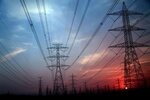News Release from Global Wind Energy Council
Wind Industry Profile of
World installs 6.1GW of Offshore Wind in 2020, led by China
The global offshore wind industry installed 6.1GW of capacity in 2020, down slightly from a record 6.24GW in 2019, although GWEC expects a new record year in 2021, as China’s offshore wind sector rushes to install 7.5GW ahead of the expiry of current feed in tariffs (FITs).
China led the world in new installations for the third year in a row with more than 3 GW of offshore wind grid connected in 2020. Steady growth in Europe accounted for the majority of remaining new capacity, led by the Netherlands, which installed nearly 1.5 GW of new offshore wind in 2020, followed by Belgium (706 MW).
The report forecasts 235 GW of new offshore wind capacity will be installed over the next decade under current policies. That capacity is seven times bigger than the current market size, and is a 15 per cent increase on the previous year’s forecasts.

Image: GWEC
However, this is only 11 per cent of the capacity required to meet net zero targets by 2050, and the world has so far installed only 2 per cent of the offshore wind capacity that will be needed by the middle of this century to avoid the worst impacts of climate change.
The Global Offshore Wind Report 2021 finds that wind has the biggest growth potential of any renewable energy technology. Currently 35 GW of capacity is installed globally, helping the world avoid 62.5 million tonnes of CO2 emissions – the equivalent of taking 20 million cars off the road – while providing 700,000 jobs across the planet. This is though only 0.5% of global installed electricity capacity.
The Global Offshore Wind Report highlights that the policy environment needs to improve rapidly for offshore wind to reach international net zero targets.
While some countries across the world have already put in place comprehensive offshore wind targets and strategies, the report finds that all together these targets across the world only account for 560 GW. Based on scenarios published by the International Energy Agency (IEA) and the International Renewable Energy Agency (IRENA), the world needs 2,000 GW of offshore wind capacity by 2050 to have a chance of keeping global temperature rises under 1.5°C pre-industrial levels.
The report highlights that delivering on offshore wind’s potential to achieve a Net Zero world calls for a step change in political action, in order to streamline planning and permitting regimes and reduce red tape, create robust market frameworks and overhaul power grids and other infrastructure.
Ben Backwell, CEO at GWEC commented: “The offshore wind industry continues to break records, reduce prices, and innovate to new heights and depths while creating significant industrial and socioeconomic benefits for countries capturing its potential. But as the G20 recognised at its most recent summit, we are in a climate emergency and we can no longer be content with simply breaking records – the scale of growth we need to achieve for the future of our planet goes beyond anything we have seen before. The offshore industry believes they can meet this challenge, but there is a clear target and policy gap that countries need to fill for the industry to deliver”.
Feng Zhao, Head of Market Intelligence and Strategy at GWEC added: “We’ve seen unprecedented growth of offshore wind over the past decade with the UK, China and Germany leading the way. Looking to the next three decades, Asia will need to emerge as the world’s most prominent offshore wind region to deliver this massive scaling-up of capacity, accounting for 40 per cent of the 2,000 GW needed by 2050, followed by Europe with 32 per cent and North America with 18 per cent. While this may seem like a huge challenge, it is just a drop in the water compared to the 71,000 GW of technical offshore wind potential that exists in the world today and goes largely untapped”.
Rebecca Williams, Director of COP26 at GWEC added: “With the crucial COP26 conference just around the corner, now is the time for countries to introduce national policy frameworks to kick-start their offshore wind markets this decade and show they are serious about renewables. Offshore will undoubtedly need to play a central role in global decarbonisation plans and is a natural sector to re-skill workers from sunset fossil fuel industries, while providing the technology to bring new solutions like green hydrogen to the scale needed”.
“But this transition and the added benefits of jobs, investments and infrastructure aren’t going to happen spontaneously – we need governments to commit to more ambitious targets and have long-term, clear policies to support this unprecedented growth for both fixed-bottom and floating offshore wind. Failure to do so not only means that countries miss out on massive economic benefits, but also that they miss out on of the most important solutions and opportunities we have to address the climate emergency today”, she added.
The full Global Offshore Wind Report 2021 can be downloaded here.
- Source:
- GWEC
- Author:
- Press Office
- Link:
- gwec.net/...
- Keywords:
- GWEC, capacity, China, gigawatts, offshore, Europe, Netherlands, Belgium, net zero targets, Global Offshore Wind Report 2021, scenario



























